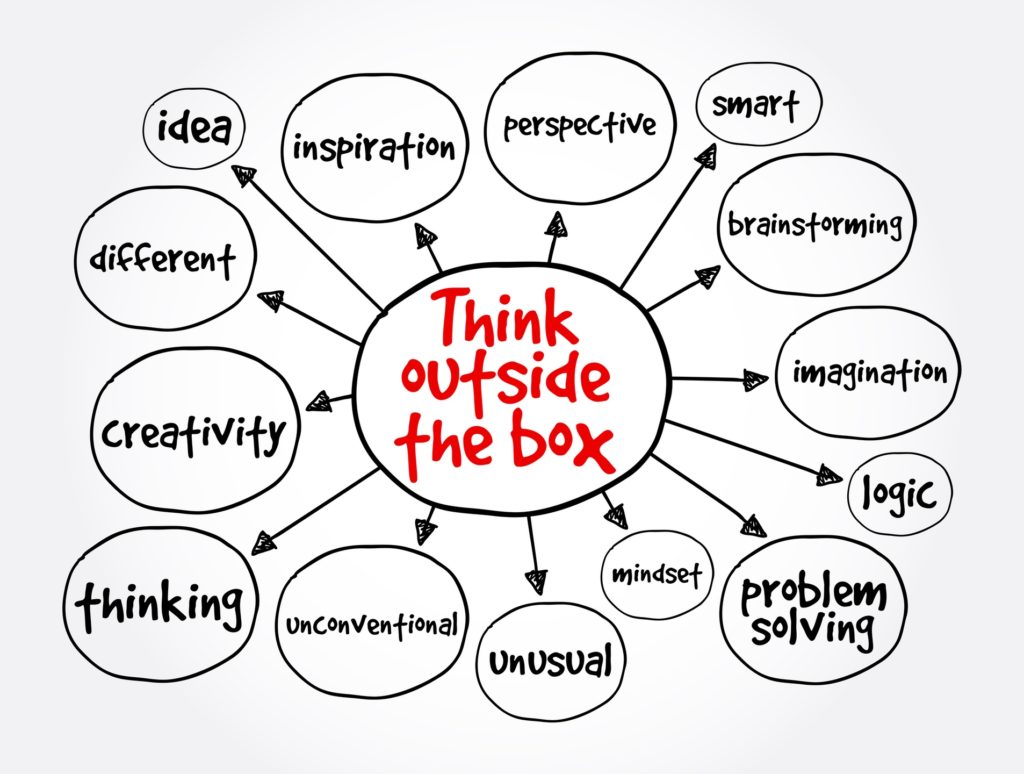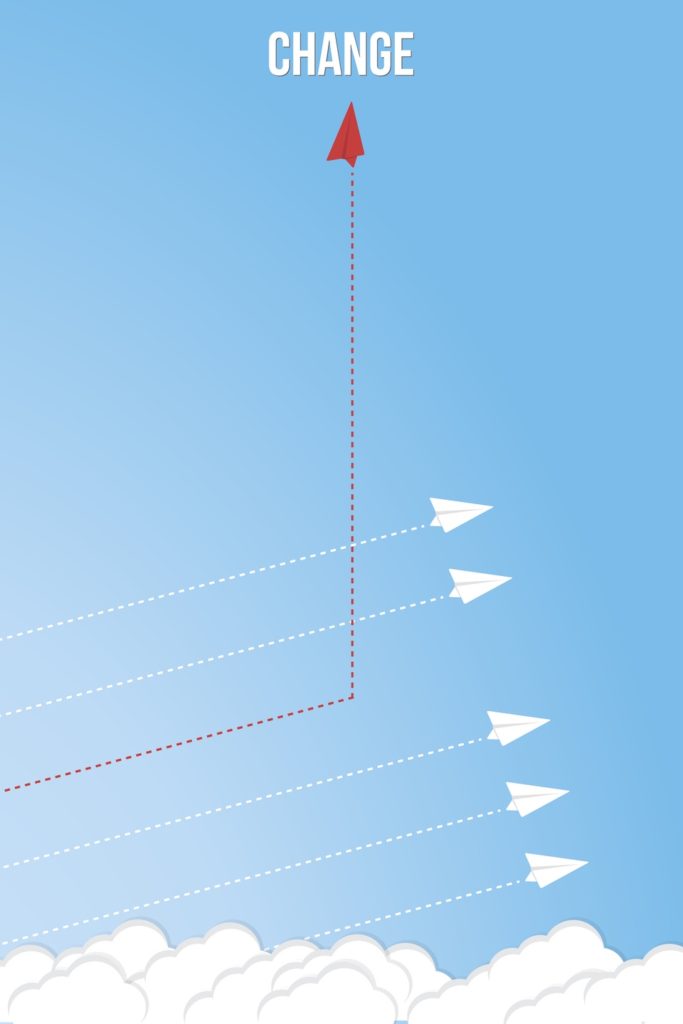Thinking outside the box simply means that you’re willing to consider different solutions and methods for reaching your goal or desired outcome. You want to get from point A to point B, but you don’t necessarily need or want to take the tried and true route to get there (which is inside the box). This can also mean considering some creative alternatives in terms of the goals or desired outcomes. Moving the goalposts, even a little, can have an outsized impact on the game. The phrase is often associated with the Nine-Dot Puzzle, where the box is sometimes literally drawn around the nine dots, framing a solution space, or maybe inferred as the paper on which the dots are drawn.

In a more general sense, the box is a perspective that provides a set of constraints on possible solutions. A new perspective looks beyond that set of constraints to enable innovative thinking. Thinking differently can have a powerful and positive effect on your career. As an entrepreneur, this is why you need to think outside the box: it can help you get ahead of your competition in identifying and exploiting opportunities.
Only incremental progress lies inside the box
The reasonable man adapts himself to the world; the unreasonable one persists in trying to adapt the world to himself. Therefore all progress depends on the unreasonable man. – George Bernard Shaw
Sometimes, we can get pretty stuck in our ways. We become complacent, just going through the motions, doing what we need to but no more. We’re scared to deviate from the set route and make our own paths. If everyone just accepted things the way they are, then there would never be any innovation or improvement in the world.

A lot of the time we’re not even really present in what we’re doing – we’re on auto-pilot. If Thomas Edison was complacent and figured things were good enough the way they were, light bulbs and the electricity to power them might never have been commercially developed. If he hadn’t thought outside the box, the world could (literally) be a very dim place. Identifying topics where complacency exists can identify an opportunity for unconventional thinking.
More things are variable than you may expect
Whether you believe you can do a thing or not, you are right.
— Henry Ford
If you view things as unchangeable, then nothing will ever change for the better. By thinking outside the box, you are questioning the status quo. Asking how you could improve an experience, product, or service for your clients. This allows you to keep growing as a person and as an entrepreneur. Questioning the status quo can provide the new perspectives necessary for intelligent and forward-thinking decisions in business.

When first articulating a client’s problem statement, it is not uncommon to have a lot of unstated assumptions regarding unchangeable factors. Let’s face it – factors that can’t be changed or controlled are boring. In reality, many factors change with time, geography, etc. Indeed, seemingly arbitrary changes in environmental factors may be causing the clients’ difficulties. A better understanding of the clients’ problem space may enable better controls to be identified. As an example, mankind can’t control the weather. On a smaller scale, heating and air conditioning significantly improve the quality of life for millions of people. Specialized “clean rooms” enable various industrial processes (from semiconductor manufacturing to biomedical research). Just because the initial client problem description assumes some factor is unchangeable, does not mean that change and control of that factor is impossible.
Outside the box perspectives
“The task is…not so much to see what no one has yet seen; but to think what nobody has yet thought, about that which everybody sees.” ― Erwin Schrödinger
Thinking outside the box can expand your worldview, allowing you to have a greater perspective. This includes not only the events and happenings in your career but also in other dimensions in your life. When you’re willing to consider alternative points of view and ways of doing things, you’ll be more open to a variety of different points of view and potential solutions. Moving from the client’s problem to a solution is not always a straight line. Creativity is often required in developing an appropriate perspective before attempting solution innovation.
This need for a new perspective is why so many businesses bring in outside consultants to help come up with new ideas. The consultants don’t carry the burden of constraints on their thinking from existing tools and processes. Their version of Outside-The-Box Thinking can dream up and offer up wildly new ideas that get people excited and lead to innovative pivots etc.
We can help!
Framing and reframing the problem from different perspectives can enable you to see past constraints. These constraints may not exist from a different perspective. Developing a client-centric, solution-agnostic problem statement can enable the needed creative thinking. For wider variety of potential solutions to be exposed, you need a broader perspective of the clients’ problem. Our free Guide to Writing Problem Statements can help you get your client program statement right.
Whether you are a researcher, business professional, or social entrepreneur, the solutions you develop to the problems that you face matter! We’d like to hear your thinking on the most important challenges so you can think outside the box for your clients. We have a brief survey that should take less than 2 minutes of your time to complete. You can get started right away by going to this link. I look forward to sharing these insights and resources with you.
A course on the use of perspective to refine problem statements is now available.
If you need help bringing the power of perspective to your client problem statement contact me.
